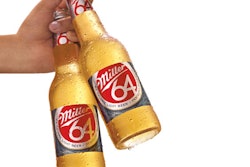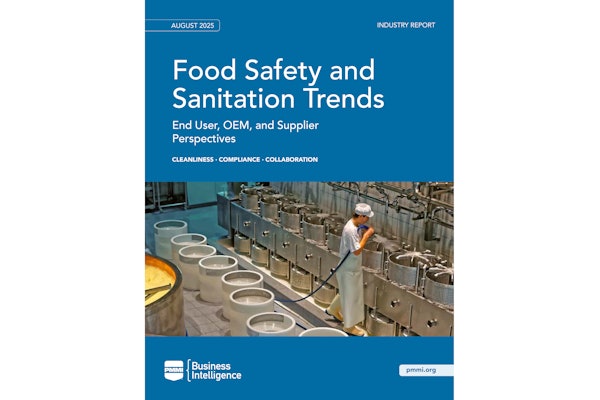This anticipated growth will result in a commensurate rise in label production. Industry reports predict that U.S. label demand will reach a projected $19.1 billion by 2017, representing an annual growth rate of 4.2 percent.
This jump is not just in volume, but also in complexity. There is a shifting landscape across several arenas, including pharmaceutical, chemical, industrial and retail, to adjust to evolving consumer, regulatory and safety requirements. These changes will come in the form of multi-channel supply chains, SKU proliferation, hyper customization and product serialization requirements. For manufacturers and inventory managers alike, maintaining cost-effective and flexible labeling operations will be instrumental in preparing for change (in whatever form it comes).
Labeling plays a diverse and critical role within the supply chain, supplementing various operations including inventory flow, workplace safety, compliance, regulation and product quality. Color labels add another dimension to these applications, allowing for more effective hazard communication on chemical products, strategic grouping of perishable foods or top-selling items and standardized identification of product categories.
Smart implementation of labeling practices in these areas can lead to reduced handling and inventory costs, improved workplace and consumer safety and a better bottom-line for companies. But supply chains are growing more complicated across industries and as product lines fragment and multiply, and delivery times speed up, labeling operations must strategically evolve to become more nimble and responsive or risk becoming another mismanaged logistical tactic.
Customization and Tracking in Pharmaceutical Packaging Require Flexible Labeling Solutions
In the pharmaceutical sector, hyper customization and product serialization are causing manufacturers to produce multiple product batches, syncing each individual drug with its own product identifier. These processes are designed to combat counterfeiting and enhance product information with the end goal of improving consumer safety. While regulatory changes like California’s e-Pedigree program have yet to be fully implemented, several vaccine manufacturers have started incorporating 2-D barcodes into their vaccines in an effort to streamline inventory management, and incorporate patient records and vaccination reports through label scanning.
These measures are meant to improve operations, increase user safety and reduce costs, but they require substantial upfront investment to ensure effective adoption. While some major pharmaceutical companies have proactively positioned themselves on the right side of this shift, the truth is that small- to mid-sized companies may not have the resources or capabilities on hand. A recent healthcare trade publication survey revealed that half of U.S. respondents did not have a serialization implementation plan in place citing time, cost, technology and regulatory clarity as drivers for inactivity. As pharmaceutical manufacturers take on multi-faceted product runs and look to customize labels for identification and consumer safety, the strategic use of on demand color labeling will play a larger role in facilitating these operations efficiently.
Color Equals Compliance Under Chemical Industry’s New GHS Requirements
Chemical manufacturers are faced with a similar but more quickly approaching challenge in the form of the Occupational Safety and Health Administration’s (OSHA) revised Hazard Communication Standard. Known as the Globally Harmonized System (GHS) of Classification and Labeling of Chemicals, manufacturers must comply with new guidelines for how chemicals are classified and hazardous information is communicated. From an operational standpoint, manufacturers will be required to produce a diverse range of chemical labels with product ingredients, warning symbols and graphics under a uniform label structure. Additionally, colored warnings as part of the variable data will now be a requirement, which produces additional challenges for labeling processes. These industry-wide regulatory changes come with a June 2015 deadline and an estimated annual price tag of $24.1 million in costs associated with upgrading label printing equipment and supplies.
Like the pharmaceutical sector, the GHS changes are part of an effort to streamline operations across a global marketplace and improve employee and end user safety. Workplace safety and emergency preparedness remain major issues within the chemical (and industrial) manufacturing sector. ‘Hazard Communication’ is ranked second on OSHA’s 2013 list of top 10 violations and less than one third of U.S. employees believe their workplace is proactive about emergency preparedness. For manufacturers and facility managers in the chemical industry, integrating on demand color labeling can ensure GHS compliance and improve workplace safety through durable labels that leverage color to spotlight hazard communications.
Retail’s Challenge: Managing Inventory for a Physical and Online Marketplace
In the retail space, the growth of e-commerce is not only propelling the demand for physical warehouse expansion but creating a new, multifaceted supply chain structure where both online and store order fulfillment occur. Retail has become a homogenous mixture of online purchases, in-store pick-ups and next day deliveries all characterized by continued product variability and personalization. A recent warehousing industry report indicated that more than half of retailers and vendors plan on increasing order volumes and number of SKUs in the next five years. With more diverse product portfolios consisting of smaller production runs and turnaround times, real-time inventory management is essential in areas like the beverage market where consumers will look beyond brand preference in the absence of product. This is the impact inventory management has on the supply chain; when a product is not found, it creates a missed opportunity to connect with the consumer, whether it be on the store shelf or the warehouse.
For retailers and their logistics partners, SKU proliferation can be a doubled edged sword without accurate and flexible inventory management. So how can companies operate effectively in this new landscape? A recent industry report entitled, ‘The Future of Standards in the Consumer Goods & Retail Industry’ reveals that while larger CPG’s and companies are transforming supply chain operations to address new consumer behavior, small- and medium-sized businesses have significantly lower rates of standards adoption, in many cases still depending on manual operating processes. For supply chain managers, on demand color labeling operations can provide additional end-to-end visibility, flexibility and the ability to group increasingly complex product inventories by product type or delivery source.
Making Sure the (Color) Label Fits
On demand color labeling technologies provide speed, high quality graphics and visuals, vibrant colors and the flexibility to produce labels with specific data variables and formats as needed. These benefits are provided without the added cost of purchasing and managing large inventories of preprinted label stock which can lead to wasted time, shipping errors and product loss.
The ability to produce high-quality color graphics on labels is another major benefit to managing increasingly complex supply chain operations. As warehouses serve as dual fulfillment centers for both online and store retail interactions, secondary and primary labels may fuse, taking on shared characteristics for enhancing a brand, categorizing inventory and identifying product information. Incorporating pictures onto labels will also radically improve picking accuracy, ensuring the right product and quantities are delivered to a consumer or business on time.
Color labels play an equally important role in both workplace and consumer safety. In the pharmaceutical setting, the selective use of color makes medications more easily identifiable, prevents incorrect patient administration and dosage errors, and consolidates the application of auxiliary labels. Color can also highlight special storage, handling or disposal instructions and identify toxic materials. In an effort to reduce employee injuries in the workplace, OSHA is requiring that chemical labels convey red pictograms to highlight chemical hazards employees may encounter.
On demand color labeling solutions offer manufacturers operational efficiency in handling this increasing labeling complexity by eliminating the long lead-time, high inventory, and large scrap volume associated with pre-printed labels. Instead, manufactures need only procure blank stock that can be custom tailored to any label format in an instant. For pharmaceutical companies managing multiple product batches or manufacturers managing a high number of product SKUs, this is an efficient way to switch production runs seamlessly or concurrently produce various product label formats within a facility using distributed production.
Labels are one solution in the supply chain toolbox. As described earlier, they can help cost-effectively maintain inventory, deliver accurate shipments and increase safety measures across a range of industries. Perhaps the bigger benefit comes from imagining how labels can become a hindrance when managing these growing complexities. As fast-growing industries like the chemical and retail market seek to address regulatory standards and increased product variability, the number of labels used to classify and track products will also jump. For companies to take on these challenges in the supply chain and thrive, they must look to cost-effective technologies like on demand color labeling that will reduce materials while maximizing production.
Andy Scherz is Senior Product Manager at Epson America


























